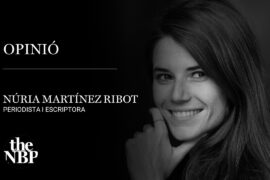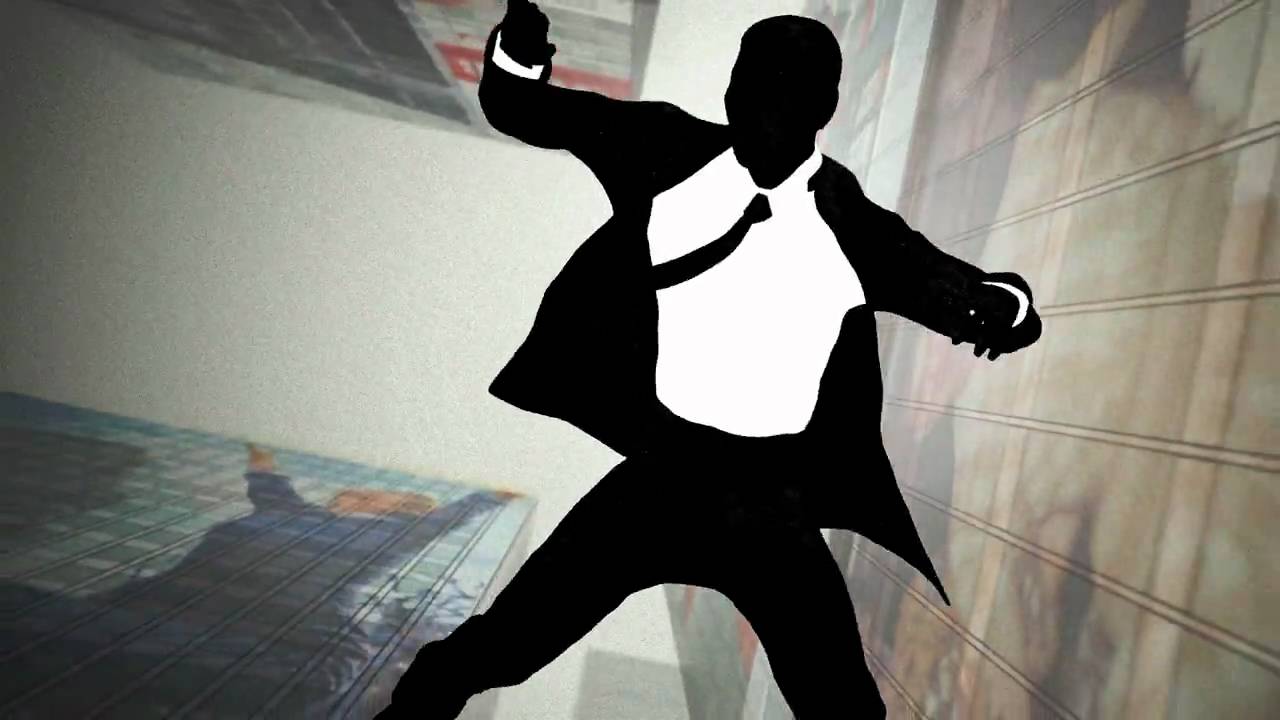
Maybe because of tradition, or because of its huge media...

Barcelona has been an outstanding entrepreneurial centre for the technology...

Currently, e-commerce generates 53 million purchases per year in Catalonia,...

The dFactory Incubator centre, capable of providing services simultaneously to...

Take a deep breath. Alright? We are going to talk...

Graduated in Biological Sciences from the Universitat Autònoma de Barcelona...

Barcelona has become a desired destination for investors, beyond the...

Not all philosophers know how to distance themselves from abstraction...

Minister for Enterprise and Knowledge Àngels Chacón highlights that “over...

We forget songs, loves and trips. Maybe, because they did...

Música clásica sobre la arena de la playa en dos...

The first session of the cycle on the regatta organized...

The hospital's managing director, Manel del Castillo, and the pharmaceutical...

Generalitat y Ayuntamiento impulsarán dos equipamientos de 'Casa de les...

Leticia Beleta, director of Alexion Pharmaceuticals in Spain and Portugal,...

We all have a friend who never leaves the Gràcia...

Barcelona director opts for Best International Film with 'La sociedad...

The hotel and industrial sectors softened the market's decline last...

The technology company, with a workforce of 35 employees and...

“The women of yesteryear were strong and had to fight...

Everything that we were told to be and everything that we wanted to be is narrated in the 90 hours of Mad Men, a TV show different than all other shows. Not only due to its astonishing literary influence, which sets up the short story excellence in a John Cheever fashion —with a touch of Neddy Merrill, the main character of The Swimmer, and I drank too much last night…—. The show, which wonderfully utilizes the short story structure, has achieved to go beyond what is serial in its characters with episodes that included the influence of Salinger or Malamud, by showing the inception characters, who start perceiving that the big playful inflatable they play with during life is deflating. It is nonetheless The Best of Everything, the novel by Rona Jaffe —inspiring, among other jewels, The Apartment—, the thread that pulls Mad Men and that describes time in which women started to claim their rights with a delicacy similar to when someone takes their gloves off. Triumph and ambition was a men’s thing in a male-dominated society, an addictive and unfaithful tendency.
The main topic of this TV show, its powerful stings, is the existential void. The melancholic condition of human beings who, despite having everything, are never happy. Or alternatively, if preferred, it is on how hedonist fashion ends up draining through the drains of insatisfaction. Its spotlight zeroes in from phylosophical nihilism to aesthetic Mannerism. Mad Men looks for the idillyc environment, which can either be a tropical beach or a big apartment in Park Avenue, where a fundamental problem takes place. “Nothing is more exhausting than being ourselves in a horizon where anything can happen”, as the romantic hero, Don Draper, says. Its characters search for themselves since they feel like their desire has turned out to be a great disappointment. They read Dante, Shakespeare, Emerson, Faulkner, Scott Fitzgerald, Roth, Pynchon, Le Carré… Bearing in mind that books tell us much of what we want to become: “We are imperfect because we want more”, reflects the main character..
Una publicación compartida de Movie Graf (@moviegraf) el
Much has been written about his quivering aesthetization of the world, but this is not more than just an extra element of why it is considered one of the best TV shows in television history. Among its furniture, outfits and parties, what truly stands out is staging, nostalgia, postmodernity and its cynicism. In the delightful book Mad Men o la frágil belleza de los sueños en Madison Avenue (Errata Naturae), Fernando de Felipe and Iván Gómez rescue the scene in which Don claims that love does not exist, and that is was invented by guys like him to sell nylons. And conclude that: “In the 1950s and 1960s happiness was a working washing machine”. A time when everything was a brand. There is neither its resounding cinematographic content —entrusted to North by Northwest, filmed in New York the year that the show started and that Matthew Weiner, its creator, made the team watch before recording the pilot episode— that, in turn, brings great visual solitude.
In the 1970s everything seemed to be possible and capitalism had sold the values of the so called modern society. Audiences claim that this is the sexiest TV show where white shirts, Eames chairs, Lucky Strike packages or the first Ray Ban all look their best
This is an epidemic factor that goes beyond the social impact of Mad Men because it evokes the world of our parents, a world that has expired in its aspirations. Don can even make us recall our own father, a strong man who used cologne for his face rather than massage lotion, smoked three cigarette boxes a day and helped himself to brandy in a big glass despite having kids running around the dining room.
In the 1970s everything seemed to be possible and capitalism had sold the values of the so called modern society. Audiences claim that this is the sexiest TV show where white shirts, Eames chairs, Lucky Strike packages or the first Ray Ban all look their best; what is for sure is that it shows the transition from pristine ladies with puffed-up skirts that read the Lady’s Journal and displayed curtains with a Murano vase to those women in bell-bottomed pants living in communes conquering their first rights.
The chapter “The Summer Man” starts off with Don’s off voice: “They say as soon as you have to cut down on your drinking, you have a drinking problem. My mind is a jumble. I can’t organize my thoughts and typing feels like work”. Alcohol is one of the main elements of the TV show as well as the “metaphysics hangover” —the idyllic state to attain truth— an interesting idea by Kingsley Amis analyzed by Enric Ros in the mentioned trial of the show. Until the first notes of Rolling Stone’s Satisfaction are heard and Draper comes out in the Street with his jacket carefully folded in his arm, gel-styled hair, sunglasses and smoking a cigarette with such pleasure that makes the audience wish they were smoking as well. Gazes the girls’ walk with desire ignited on their hair. “Summer’s coming. I smelled it. I kind of thought I smelled corn, which is impossible. There it was again”. The hedonist man who seems to be able to drink all the world one sip at a time, and his voice becomes serene: “List of to-do things: 1) Climb the Kilimanjaro. 2) Gain a modicum of control over the way I feel. I want to wake up one day being that man”. Melancholy, that old wound.

Everything that we were told to be and everything that we wanted to be is narrated in the 90 hours of Mad Men, a TV show different than all other shows. Not only due to its astonishing literary influence, which sets up the short story excellence in a John Cheever fashion —with a touch of Neddy Merrill, the main character of The Swimmer, and I drank too much last night…—. The show, which wonderfully utilizes the short story structure, has achieved to go beyond what is serial in its characters with episodes that included the influence of Salinger or Malamud, by showing the inception characters, who start perceiving that the big playful inflatable they play with during life is deflating. It is nonetheless The Best of Everything, the novel by Rona Jaffe —inspiring, among other jewels, The Apartment—, the thread that pulls Mad Men and that describes time in which women started to claim their rights with a delicacy similar to when someone takes their gloves off. Triumph and ambition was a men’s thing in a male-dominated society, an addictive and unfaithful tendency.
The main topic of this TV show, its powerful stings, is the existential void. The melancholic condition of human beings who, despite having everything, are never happy. Or alternatively, if preferred, it is on how hedonist fashion ends up draining through the drains of insatisfaction. Its spotlight zeroes in from phylosophical nihilism to aesthetic Mannerism. Mad Men looks for the idillyc environment, which can either be a tropical beach or a big apartment in Park Avenue, where a fundamental problem takes place. “Nothing is more exhausting than being ourselves in a horizon where anything can happen”, as the romantic hero, Don Draper, says. Its characters search for themselves since they feel like their desire has turned out to be a great disappointment. They read Dante, Shakespeare, Emerson, Faulkner, Scott Fitzgerald, Roth, Pynchon, Le Carré… Bearing in mind that books tell us much of what we want to become: “We are imperfect because we want more”, reflects the main character..
Una publicación compartida de Movie Graf (@moviegraf) el
Much has been written about his quivering aesthetization of the world, but this is not more than just an extra element of why it is considered one of the best TV shows in television history. Among its furniture, outfits and parties, what truly stands out is staging, nostalgia, postmodernity and its cynicism. In the delightful book Mad Men o la frágil belleza de los sueños en Madison Avenue (Errata Naturae), Fernando de Felipe and Iván Gómez rescue the scene in which Don claims that love does not exist, and that is was invented by guys like him to sell nylons. And conclude that: “In the 1950s and 1960s happiness was a working washing machine”. A time when everything was a brand. There is neither its resounding cinematographic content —entrusted to North by Northwest, filmed in New York the year that the show started and that Matthew Weiner, its creator, made the team watch before recording the pilot episode— that, in turn, brings great visual solitude.
In the 1970s everything seemed to be possible and capitalism had sold the values of the so called modern society. Audiences claim that this is the sexiest TV show where white shirts, Eames chairs, Lucky Strike packages or the first Ray Ban all look their best
This is an epidemic factor that goes beyond the social impact of Mad Men because it evokes the world of our parents, a world that has expired in its aspirations. Don can even make us recall our own father, a strong man who used cologne for his face rather than massage lotion, smoked three cigarette boxes a day and helped himself to brandy in a big glass despite having kids running around the dining room.
In the 1970s everything seemed to be possible and capitalism had sold the values of the so called modern society. Audiences claim that this is the sexiest TV show where white shirts, Eames chairs, Lucky Strike packages or the first Ray Ban all look their best; what is for sure is that it shows the transition from pristine ladies with puffed-up skirts that read the Lady’s Journal and displayed curtains with a Murano vase to those women in bell-bottomed pants living in communes conquering their first rights.
The chapter “The Summer Man” starts off with Don’s off voice: “They say as soon as you have to cut down on your drinking, you have a drinking problem. My mind is a jumble. I can’t organize my thoughts and typing feels like work”. Alcohol is one of the main elements of the TV show as well as the “metaphysics hangover” —the idyllic state to attain truth— an interesting idea by Kingsley Amis analyzed by Enric Ros in the mentioned trial of the show. Until the first notes of Rolling Stone’s Satisfaction are heard and Draper comes out in the Street with his jacket carefully folded in his arm, gel-styled hair, sunglasses and smoking a cigarette with such pleasure that makes the audience wish they were smoking as well. Gazes the girls’ walk with desire ignited on their hair. “Summer’s coming. I smelled it. I kind of thought I smelled corn, which is impossible. There it was again”. The hedonist man who seems to be able to drink all the world one sip at a time, and his voice becomes serene: “List of to-do things: 1) Climb the Kilimanjaro. 2) Gain a modicum of control over the way I feel. I want to wake up one day being that man”. Melancholy, that old wound.
